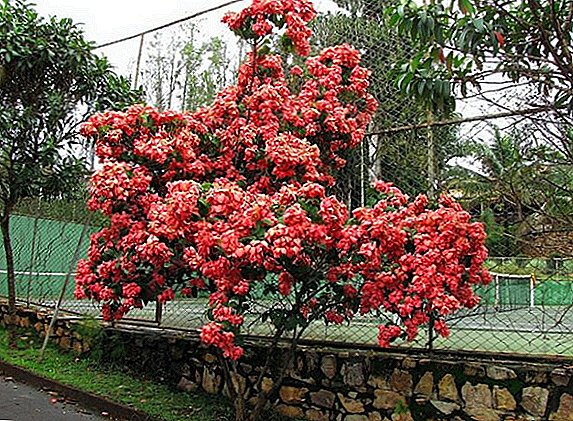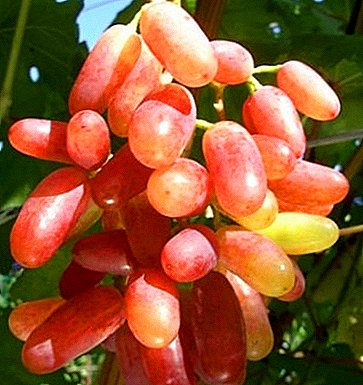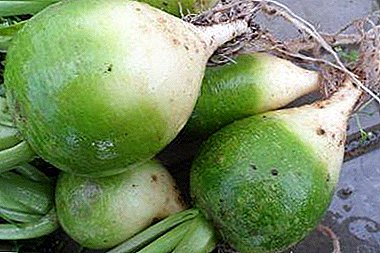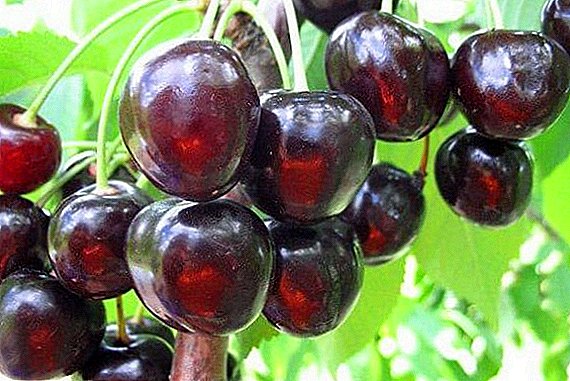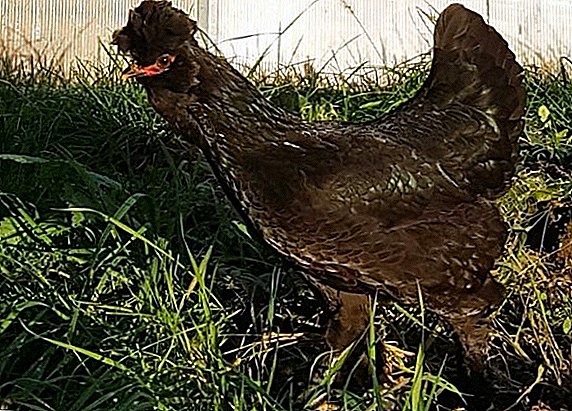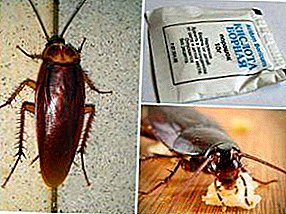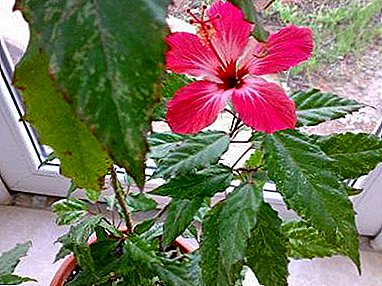
Many have heard about the Chinese rose, but few know all the subtleties of caring for Cooper's hibiscus (this is the name of a flower in its historic homeland) that will make its flowering longer and brighter. Cooper's hibiscus will surprise all visitors to your home or garden with its unrivaled flowering and amazing leaves.
This article will tell you what temperature, watering, lighting, and soil for the plant are required. How to prune it, how to feed it, how to transplant it and in which pot, and how the plant spends the winter. And, of course, what diseases and pests can threaten the plant and how to get rid of them.
Botanical description
Cooper's hibiscus belongs to the Malvaceae family.. It is an evergreen shrub. Flowering lasts from spring to autumn, but the flowers live up to two days. Fruiting boxes with five leaves with a large number of seeds covered with a gun.
Cooper's hibiscus belongs to the variegated varieties, because it is also called variegated hibiscus.
Reference! The Latin name of the flower is “Hibiscus rosa-sinensis var. cooperi.
At home, Cooper's hibiscus can grow from 70 centimeters to 1.5 meters tall.
Hibiscus Cooper, unlike brethren, has longer leaves (can reach up to 10-12 centimeters in length and 3 centimeters in width). On the petals are cream and pink speck. The plant branch well.
A photo
Further in the photo you can see how the hibiscus is variegated.





History of occurrence and geography of habitat
Homeland hibiscus are considered India and China. Thanks to the silk road, this handsome man came to the Middle East. Eastern European roses appeared in European gardens in the 13th century.
Hibiscus Cooper was imported to England from New Caledonia by Daniel Cooper and was subsequently named after him.
Today hibiscus grows in:
- Thailand;
- Egypt;
- China;
- Sudan;
- on the islands of Ceylon and Java.
Home care
Temperature
In the summer season, hibiscus will be comfortable in the temperature range of 16-22 degrees.
Watering
Hibiscus should be watered every 4 days, as the soil must be constantly hydrated. Water is better to use warm and well-settled.
Shine
Hibiscus loves bright light, but it must be diffused. In direct sunlight, it can easily get burned. Because he likes the south-west window or south with shading.
Cooper's hibiscus is very sensitive to light and can wrap shoots in its direction. Therefore, for a uniform shape, it should be periodically deployed by different sides to the light source.
Priming
Light soils with good air conductivity will go well. Perfect mix of the following composition:
- garden land;
- coarse sand (or perlite);
- wet peat (or humus) in equal parts;
- a little lime.
Pruning
 Pruning is not only necessary for shaping a small tree, but also stimulates flowering. Pruning can be done throughout the year.
Pruning is not only necessary for shaping a small tree, but also stimulates flowering. Pruning can be done throughout the year.
- In early spring they pinch all the shoots, even young ones.
- After flowering pinch the tip of the branch. A little later, hibiscus will shoot side shoots with new buds.
- Pruned shoots growing parallel to the main trunk.
- Cut the branches growing inside the crown.
Top dressing
The first feeding give 2 months after transplantation, then hibiscus fertilized from April to October, once every 3-4 weeks. For Cooper's hibiscus, you should not take a supplement with a high nitrogen content, since excess nitrogen can negatively affect flowering and flower color.
But the presence of boron, zinc, molybdenum and copper in the composition will have a beneficial effect.
Pot
In the pot must have a drainage hole. Also, with each transplant, you need to take the capacity for a couple of centimeters more. Another size of the pot affects the appearance of the flower: a large capacity stimulates the growth of the crown, narrow - flowering. From materials suitable ceramics or wood, but in plastic pots the roots of a plant can overheat.
Transfer
Plants require a transplant every year.. Mature plants are replanted every 3-4 years. If they are very large, then you should only update the top layer of soil in the pot.
- A couple of days before transplantation, the soil in the pot is watered abundantly.
- Conduct pruning plants.
- Prepare a new container with a soil mixture (a quarter of the volume of the tank should be occupied by the drainage layer).
- On the day of transplantation, a flower is extracted along with an earthy ball.
- Carefully remove the soil with a wooden stick that is not digested by the roots.
- Place the plant in a new pot and add soil mixture.
Wintering
In winter, the plant is less watered, mostly just to avoid drying out of the earthy coma. A temperature of about 14-16 degrees will be optimal for hibiscus. You should also move the flower closer to the color in order to avoid a lack of daylight.
Breeding patterns for this species
Cooper's hibiscus can be propagated by cuttings or seeds. Seeds are a more complicated and long way, but even beginner breeders will be able to cope with cuttings.
When seeds multiply bloom grown hibiscus will come only after 2-3 years. When grafting - you can admire the flowering in a year. Another advantage of grafting is that daughter plants repeat all maternal properties.
We offer you to watch a video about cutting hibiscus:
Briefly about diseases and pests
 Any violations of the rules of care affect hibiscus. In particular, you should not forget about watering and maintaining the desired humidity: dry earth in a plant can turn into shedding of all the buds and leaves.
Any violations of the rules of care affect hibiscus. In particular, you should not forget about watering and maintaining the desired humidity: dry earth in a plant can turn into shedding of all the buds and leaves.
Of the parasites dangerous aphid, which usually affects the fragile leaves and buds. Spider mite can be noticeable on a thin grid of spider webs, located in the internodes. All parasites are destroyed by special means. Against the spider mite, you can still use a soap solution.
Similar flowers
- Irises have a fancy shape and will delight owners of variegated colors, like Cooper's hibiscus.
- Other representative of the Malvova family - marsh mallow - has almost identical form with hibiscus.
- Abutilon You can also grow at home, and its flowering continues from spring to late autumn.
- Zonalcea can decorate the garden from mid-summer to September, being a small copy of the mallow. Its colors vary from white to violet.
- Chinabella It has cup-shaped flowers of gently white color. It blooms from July to October.
Hibiscus Cooper is perfect for those growers who want to decorate their home with an exotic handsome without any hassle to take care of. Undemanding, but charming flower can be a real discovery for novice flower lovers.


